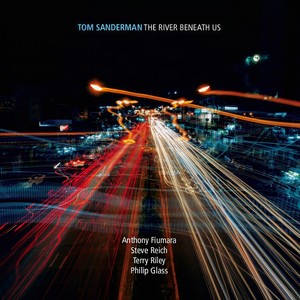
The River Beneath Us
- 流派:Classical 古典
- 语种:其他
- 发行时间:2016-10-01
- 唱片公司:Alaska Records
- 类型:录音室专辑
- 歌曲
- 时长
-
The River Beneath Us
简介
The soprano saxophone enjoyed something of a renaissance in the mid-1960s thanks to John Coltrane; particularly his album My Favorite Things (1961). Terry Riley (who was friendly with saxophonist Jon Gibson as well as Coltrane) felt drawn to the instrument. He recalls being so impressed with Coltrane’s sound, after arriving in New York in 1965, that he wanted to write a piece for soprano sax. The first of his works that explores the soprano saxophone is Dorian Reeds (1965) aka Dorian --- (since it may be for any instrument). Riley duplicates, delays, and overlays a series of saxophone phrases in Dorian Reeds with the time-lag, looping, and phasing accumulator. The piece represents a written real-time response to this newly invented effect machine; as do other Riley works of the same period. It points in the direction of Poppy Nogood and the Phantom Band (on this third album A Rainbow in Curved Air) which was essentially an extension of the same idea. Riley's meeting with Steve Reich is the stuff of legends. He showed him an early version of In C (later seen as his key work). Reich was so impressed that he immediately offered the services of his ensemble for the premiere and he has even been credited with suggesting, during rehearsal, the use of the pulsing high C in eighth notes on the piano to keep the piece together—a necessity which may have run counter to the democratic ideal proposed by Riley's score. The work Reed Phase (1966) was originally titled Saxophone Phase or Three Reeds. It was written for Jon Gibson, Reich’s long-time associate. Saliently, it is the first of Reich’s compositions to transfer the mechanical phase-shifting process, seemingly indigenous to tape loops, to live musical performance. The work Reed Phase (1966) was originally titled Saxophone Phase or Three Reeds. It was written for Jon Gibson, Reich’s long-time associate. Saliently, it is the first of Reich’s compositions to transfer the mechanical phase-shifting process, seemingly indigenous to tape loops, to live musical performance. In winter 1965 and spring 1966, Philip Glass worked as a music director and composer on the film score of Chappaqua with Ravi Shankar and Alla Rakha who would influence Glass's musical thinking to an important degree. His distinctive style arose from this collaboration with Shankar and Rakha; particularly their perception of rhythm in Indian music as being entirely additive. Glass renounced all his earlier compositions in a moderately modern style as resembling Darius Milhaud's, Aaron Copland's, and Samuel Barber's, and began writing pieces based on the repetitive structures found in Indian music. Finding little sympathy from traditional performers and performance spaces, Glass eventually formed an ensemble with fellow ex-students Steve Reich, Jon Gibson, and others and started to perform mainly in SoHo's art galleries and studio lofts. Between the summer of 1967 and the end of 1968, Glass composed nine works, including Gradus for solo saxophone (1968) which were ‘clearly designed to experiment more fully with his new-found minimalist approach’ as the musicologist Keith Potter has pointed out. The early minimalism of Riley, Reich, and Glass has inspired Anthony Fiumara as a composer. Riley's delay canons, Reich's fascination for processes, and Glass' gusto for the rhythmical metamorphoses of small motifs are partly reflected in Fiumara's The River Beneath Us, which he wrote for Tom Sanderman after the musician commissioned him to write a work for tenor sax. The piece consists of four movements – slow/fast/slow/fast. Each movement shows the saxophone in a different light. The simplicity of the notes is deceptive as was the case with the early minimalists: below the surface and woven into the ostensible repetitions, everything is constantly subject to change—sometimes imperceptibly—and every movement requires a different focus from the player.



